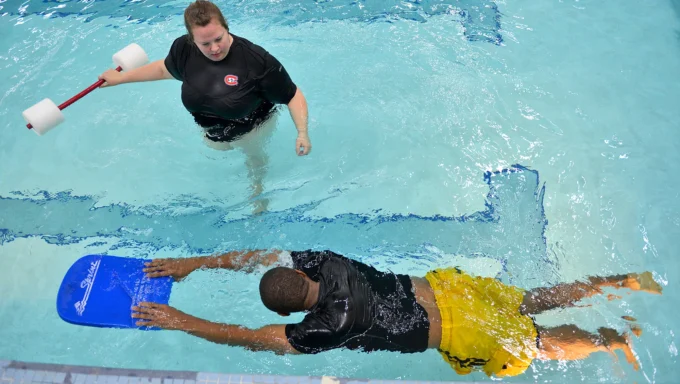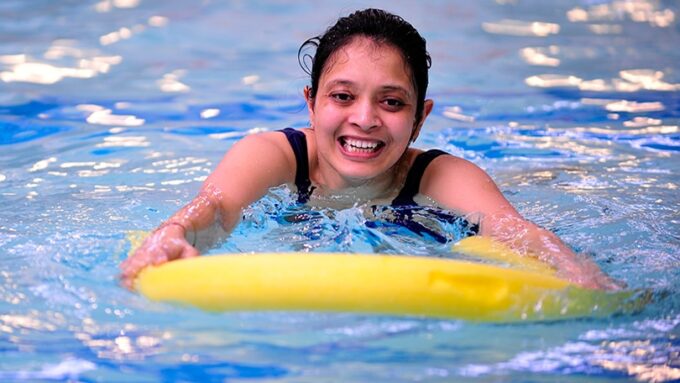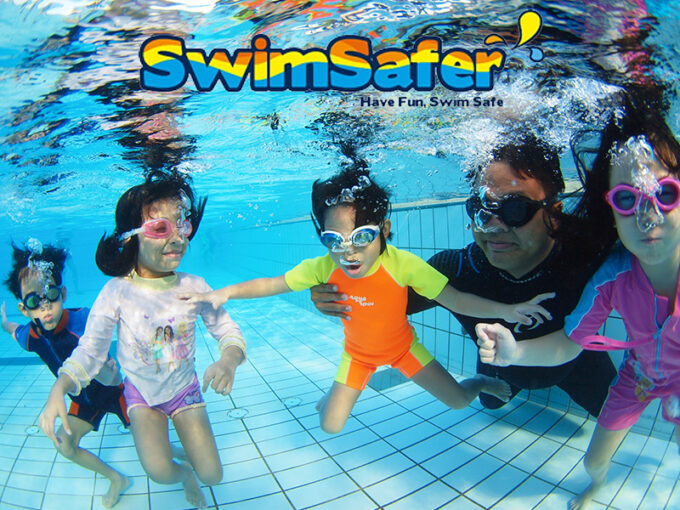Nothing compares to the feeling of the cool water on your skin as you swim, but for many people, the thought of going swimming can be daunting. That’s why, in this blog post, we’re going to show you how to overcome your fear of the water and become comfortable in it. With these tips and tricks, you’ll be able to conquer your fear of the water and dive into a world of fun and relaxation.
Swimming A Valuable Skill That Can Be Learned

Source: usatoday.com
Swimming and diving have many physical benefits. For example, swimming is great for building strength and muscle mass in the arms, legs, back, and stomach. Swimmers also tend to have lower rates of heart disease than those who don’t swim or dive. Additionally, swimming has been shown to improve balance skills, coordination skills, lung function (especially for women), mental health (including reducing stress levels), and sleep quality/quality of life.
Beyond physical benefits though are mental ones too. Swimming has been proven to improve cognitive function in adults over the age of 60 years old by helping them stay mentally active and focused throughout the day. To sum up: If you are looking for a fun fitness activity that you can enjoy with friends or family alike – look no further than swimming!
Uncover The Benefits Of Overcoming Your Fear Of Water

Source: swimming.org
There’s no need to be afraid of the water – in fact, you may be surprised at the many benefits that it can provide. By recognizing and identifying why you are scared of the water, you can set small goals in order to conquer your fear bit by bit. And by practicing in a comfortable and familiar environment such as a swimming pool, you can gradually increase your comfort level and readiness for open water swimming.
However, conquering your fear of the water is not easy – it takes time and practice. That’s where our blog comes in. We’ve outlined the steps that you need to take in order to overcome your fear of the water and gain all of the benefits that it has to offer.
– First, recognize and identify why you are scared of the water. This may be because you have experienced something traumatic or frightening while swimming or near a body of water. Once you understand what is causing your fear, it becomes much easier to conquer it.
– Next, set small goals that will help you conquer your fear bit by bit. For example, start by learning basic swimming techniques like floating and breathing correctly. Make sure that your environment is comfortable and suited to your needs – don’t try something new if it feels too risky or scary!
– And finally, let go with trust – yoga or mindfulness techniques can help calm and center you before attempting open water swimming.
But conquering your fear of the water is not just about mastering these skills – it’s also about having a positive mindset towards swimming! When thoughts like I’m going to drown come up, replace them with more encouraging thoughts like I’m taking a step forward in my journey. Celebrate any small successes along the way, even if they’re just tiny steps forward! And most importantly: don’t be hard on yourself when things get tough – remember that every step counts!
How To Prepare For The SwimSafer Test?

Source: myactivesg.com
Swimming is a great way to stay physically active and improve your cardiovascular fitness. However, it can be scary and intimidating to try it for the first time. That’s where the swim safer test comes in! This simple test will help you determine your swimming level and give you a better understanding of the safety measures that you need to take before jumping into the pool.
There are three different levels of tests: beginner, intermediate, and advanced. Each level offers more information about how to swim safely and protect yourself from drowning. For example, the beginner test will cover basic strokes such as the Stroke Crawl, Backstroke, Breaststroke, and Butterfly while the advanced test will introduce new techniques such as floating and gliding.
Once you have completed your test, it’s important to practice what you’ve learned! Swimming is a fluid sport that requires good body movement and coordination, so practice makes perfect. Try floating on your back or gliding through the water with ease – this will help build confidence in water. You can also practice managing your breathing by practicing controlled breathing underwater or during air breaks between stroke types. Finally, remember that regardless of your swimming level – always be safe by using self-protection techniques such as staying afloat using buoyancy devices or wearing a life jacket when swimming outside of designated areas.
Learn To Relax And Trust Your Strengths In The Water
Swimming is a great way to relax and de-stress. However, it can be difficult to feel confident and relaxed. That’s where these techniques come in! In this blog, we’ll outline some simple techniques that will help you to feel more confident and at ease while swimming.
– The first step is to learn how to relax. This can be a difficult task, but with patience and practice, you can develop good habits for relaxing in the water.
– Once you’ve learned how to relax, it’s important to address your individual fears. For example, if you’re afraid of deep water or getting wet, try using shallow waters or floating instead of diving in headfirst. By taking your time and addressing each fear one at a time, you’ll build up your confidence gradually over time.
– Finally, understand basic safety skills before jumping into the pool or ocean. Familiarize yourself with the different types of safety equipment that is available (such as lifejackets) and learn how to use them correctly. By understanding these basics, you’ll be on the safe side when enjoying a swim outdoors.
Once you’ve mastered these basics, it’s time for some fun! Learn how to float around like a butterfly and dive underwater like a pro – these skills will give your swimming experience an extra boost of excitement!
To Summarize

Source: indianexpress.com
Conquering your fear of the water can seem daunting, but with a little bit of practice and determination, you can overcome it. Start by recognizing why you are scared of the water and setting small goals that can help you become comfortable in it. Then, develop confidence in the water by desensitizing yourself to its environment and creating an individualized swimming plan based on your strengths and weaknesses. With these tips and tricks, you will see how enjoyable swimming can truly be! So don’t wait any longer – take the plunge today and start conquering your fear of the water!

